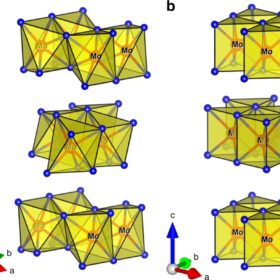
A team of scientists led by the University of Glasgow has discovered a more efficient method of splitting water into hydrogen and oxygen using electricity which it says could almost double the amount of hydrogen produced per millivolt.
Researchers from universities across Europe have discovered a way to greatly increase the efficiency of water electrolysis, potentially doubling the amount of hydrogen produced during the process.
‘Green hydrogen’ – electrolysis powered by renewable energy with zero carbon emissions – is touted by many as a vital part of the energy transition, either as a transport fuel or long term electricity storage option. However, renewable energy electrolysis is still pricey compared to the same process when powered by fossil fuel and the fate of green hydrogen will hang on continuing clean energy price falls, according to some analysts.
Reducing the amount of energy required to perform hydrolysis, of course, would be another way of cracking the nut.
The European research team, led by Scotland’s University of Glasgow, worked with electrodes coated in a molybdenum telluride catalyst and found that when electricity was applied to the electrodes in a particular pattern of high-current pulses, the amount of hydrogen produced during electrolysis increased. By optimizing the pulse pattern, the team said it was able to almost halve the amount of electricity needed to produce a given amount of hydrogen.
Machine learning
The results, published in Nature Communications, show the performance of the catalyst was greatly improved when the electrode was held at a cathodic bias – reducing the overpotential needed to maintain a 10 milliamp cm−2 current from 320 millivolts to 178.
“It’s vital that we develop a robust suite of methods to store the energy for later use,” said Alexey Ganin, of the University of Glasgow, who led the team. “Batteries are one way to do that but hydrogen is a very promising alternative. Our research provides an important new insight into producing hydrogen from electrolysis more effectively and more economically, and we’re keen to pursue this promising avenue of investigation.”
The researchers posited machine learning could be used to further optimize the application of current pulses to achieve maximum output. They said the next stage of their research will focus on developing “an artificial intelligence protocol to replace human input in the search for the most effective electronic structures use in similar catalytic processes”.
Lắp đặt điện mặt trời Khải Minh Tech
https://ift.tt/2X7bF6x
0906633505
info.khaiminhtech@gmail.com
80/39 Trần Quang Diệu, Phường 14, Quận 3
Lắp đặt điện mặt trời Khải Minh Tech
https://ift.tt/2ZH4TRU
Không có nhận xét nào:
Đăng nhận xét